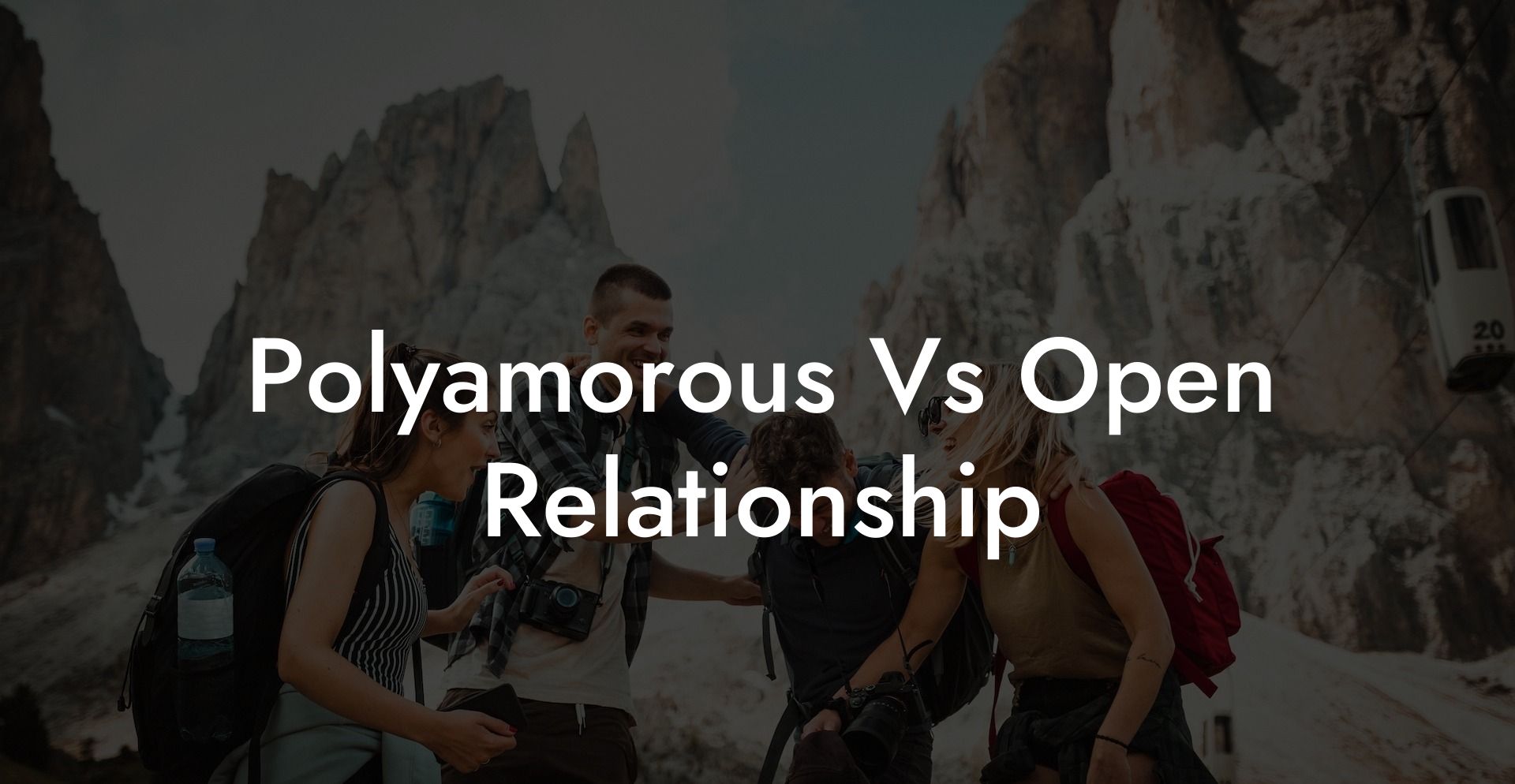Navigating the world of relationships can be complex, especially when it comes to understanding the different options available when choosing to pursue non-monogamous relationships. As individuals become more open about their personal preferences and desires, two terms have emerged as popular alternatives to traditional monogamous partnerships: polyamorous and open relationships. But what exactly do these terms mean, and how does one begin to explore these alternate relationship structures? In this article, we'll deep-dive into the definitions, similarities, and differences between polyamory and open relationships, providing you with the knowledge you need to make informed decisions about your own relationships and how they align with your personal values and requirements.
Polyamorous Vs Open Relationship Table of Contents
Polyamorous Relationships
Polyamorous relationships are those in which an individual engages in multiple intimate, loving relationships simultaneously, with the full knowledge and consent of all parties involved. Polyamory is based on the idea that love is not finite and can be shared amongst multiple partners. This relationship structure can take many forms, including hierarchical relationships (where one partner may hold a primary status), non-hierarchical relationships (where all partners have equal importance), and solo polyamory (where an individual engages in multiple relationships but maintains their independence).
Open Relationships
Open relationships, on the other hand, are typically defined as relationships in which two individuals are committed to one another but agree to allow additional sexual experiences outside of their committed partnership. These relationships still prioritize the emotional bond between the two primary partners, and the focus remains on maintaining a strong connection amongst them. The agreements and boundaries set forth in open relationships vary greatly, as each couple has the freedom to determine what works best for their unique relationship dynamic. This may mean that one or both partners engage in casual, no-strings-attached encounters, or explore more meaningful connections with other individuals while still prioritizing their primary partnership.
Similarities and Differences
Both polyamorous and open relationships fall under the broader umbrella of ethical non-monogamy, which is the practice of engaging in multiple intimate relationships with the consent and knowledge of all parties involved. The key difference between the two lies in the level of emotional investment involved. Polyamory emphasizes multiple, concurrent loving relationships, while open relationships generally focus on maintaining a strong emotional bond between the primary partners while allowing for additional sexual experiences.
One similarity between polyamorous and open relationships is the need for strong communication skills and a commitment to ongoing conversation about boundaries, agreements, and expectations. Navigating non-monogamous relationships requires active, honest, and open communication to ensure that all parties feel secure, valued, and respected. Another similarity is the importance of trust within both relationship structures. Both partners must be committed to maintaining trust and honesty to foster healthy, flourishing relationships.
Example
Let's imagine a couple, Alice and Bob, who have been together for five years. They love each other very much but decide they want to explore the idea of non-monogamy. After an open discussion, they agree to pursue a polyamorous relationship structure, where both Alice and Bob are free to form deep emotional connections with other partners, while maintaining their existing relationship. Over time, Alice forms a secondary relationship with Carol, and Bob forms a secondary relationship with Dan. Alice and Bob remain committed to each other, with Carol and Dan being important, but separately held relationships in their lives.
Understanding the differences and similarities between polyamorous and open relationships can help you make empowered decisions about your own relationship journey. As we continue to explore the wide and varied world of non-monogamy and alternative relationship structures, remember that the key is always communication and trust. With these foundations in place, the possibilities for building fulfilling and authentic connections are limitless.
If this article resonated with you, we encourage you to share it with friends, discuss the ideas with your partner, and explore other guides and resources here at The Monogamy Experiment. Engage in the conversation and further expand your horizons as you explore the exciting world of non-monogamous relationships.













